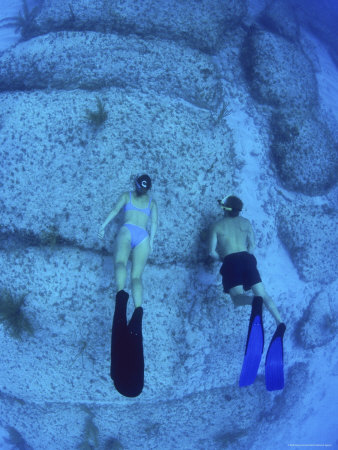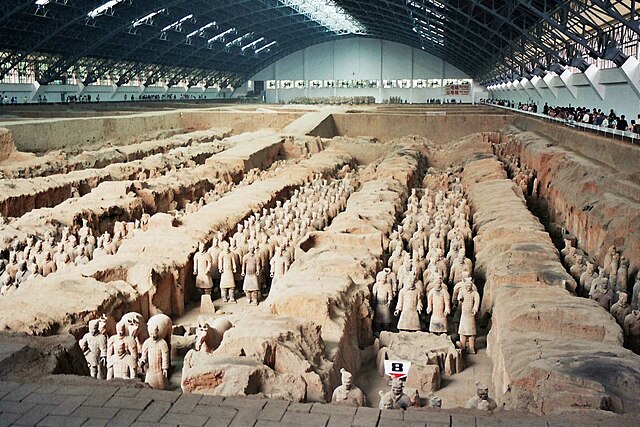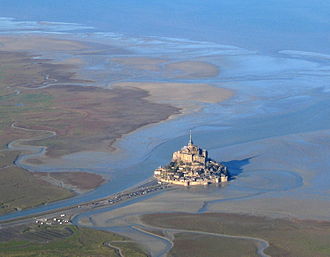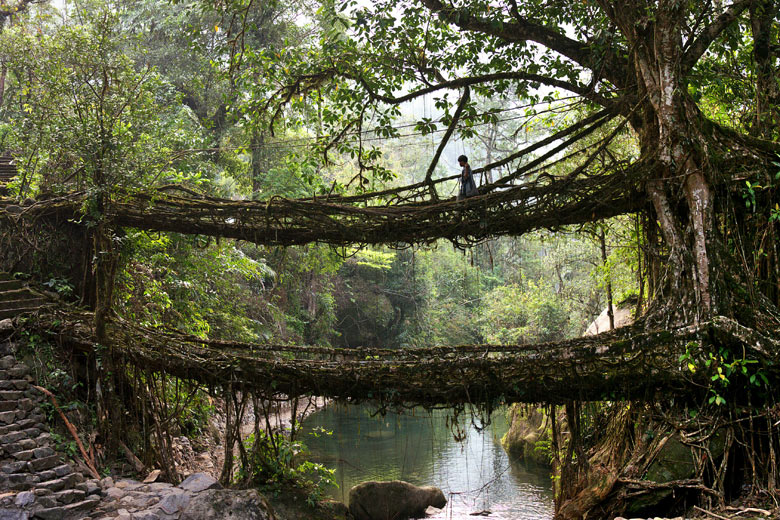The article includes a table of random destinations for the myriad magical portals in the underground citadel of Mag Tureah. Almost all of these are based off of real-world buildings or geography, and I thought I should do people the courtesy of showing them what we were looking at as we came up with the destinations.
A guide to the visual inspirations for the random portals in Mag Tureah:
1. A ruined castle of glass atop an earthmote, spiral staircase connecting it to the ground.
My inspiration here is the "Castle in the Air" from The Phantom Tollbooth. If you haven't read the book, it's fabulous. Go read it and then come back to read the rest of the post. I'll wait. Shouldn't take you more than an afternoon.
 |
| The mouth of a flooded cavern, the beginning of an undersea road paved with huge stones. |
3. A partially toppled circle of stone menhirs overgrown by jungle vines -- I was thinking primarily of what Stonehenge might look like in a jungle environment.
_-_TIMEA.jpg) | |
| A gargantuan statue buried in desert sand up to its monstrous head. |
5. An abandoned dragon’s aerie perched on the lip of an active volcano. Nothing more need be said here, I think.
6. A temple to a long-dead god whose collapsed ceiling opens to the night sky. (I'm sticking with our original phrasing here because I think it's more poetic). I haven't been able to re-locate the picture that was the inspiration here, but any number of ruined cathedrals and monasteries could serve as a jumping-off point.
7. A forgotten chamber that opens up to the sewers of the largest city on the continent. Like the dragon's aerie in number 5, I don't think a lot more need be said. Kudos to Spiderweb Software's "Avernum 2" as a starting point.
 |
| A tower overlooking a courtyard filled with petrified soldiers standing in neat rank. |
8. My inspiration here was the famous terracotta army, at the tomb of the first Qin emperor in China. I learned around the time we were writing this section that the army was originally painted!
 |
| A deserted priory sprawling across a rocky tidal island |
 |
| A crumbling observatory open to the skies above |
 |
| A covered bridge, woven from the roots of living trees, over a murky river. |
 |
| A frozen city built on a terraced mountaintop, with no trace of its former inhabitants. |